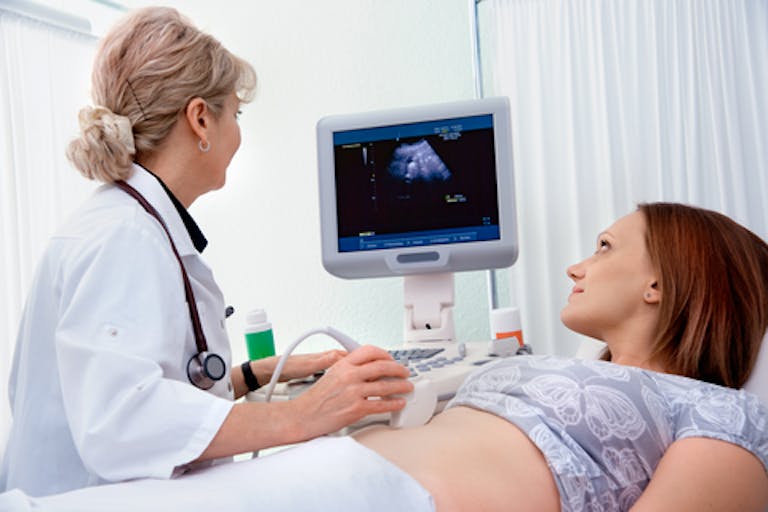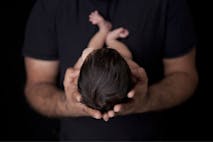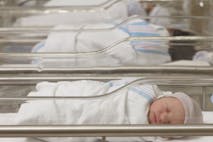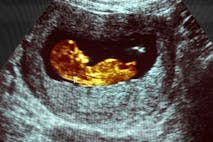
Judge overturns state’s mandate to check for dangerous ectopic pregnancy before giving abortion pill
Bridget Sielicki
·
In attack on Bishops, pro-abortion politicians mislead public on facts about abortion
(National Review) At last month’s meeting of the United States Conference of Catholic Bishops, the group voted to move forward on preparing a teaching document about the Holy Eucharist. The document might end up having implications for Catholic elected officials who support legal abortion and present themselves for communion.
As a result of those implications, it should come as no surprise that the bishops are facing criticism from liberal pundits. Last week, The New Republic published an article co-written by former Maryland lieutenant governor Kathleen Kennedy Townsend and physician Patrick Whelan, criticizing the bishops for their “hypocrisy.”
Like countless commentators before them, Townsend and Whelan attempt to argue that policies advanced by “pro-choice” Democratic elected officials result in lower abortion rates — but their arguments fail to persuade.
For one thing, their article is filled with misrepresentations. The authors claim, for example, that “Trump was the first president in the past 20 years to leave with all three abortion indices (number, rate, and ratio) rising.” This assertion is misleading for two reasons. First, the most recent year for which the Centers for Disease Control has released abortion data is 2018; there are no national data on the U.S. abortion rate from either 2019 or 2020. Second, the abortion data released by the CDC indicate that the U.S. abortion rate actually declined between 2016 and 2018.
It is true that the CDC found a slight increase in the abortion rate between 2017 and 2018, but this increase more than likely was unrelated to any Trump-administration policy. Part of the reason for the rise in the abortion rate went up is that some liberal states made their abortion policies more permissive. For instance, in 2018, the Illinois Medicaid program began covering elective abortions, and, unsurprisingly, the abortion rate in Illinois rose by 9 percent from 2017 to 2018.
Meanwhile, in 2016, the Food and Drug Administration changed its policies for the chemical-abortion drug Mifeprex, which allowed women to obtain chemical abortions later in pregnancy, with fewer visits to the physician’s office. This was likely a major reason for the fact that the number of chemical abortions in the U.S. increased by about 10 percent between 2017 and 2018.
READ: Pro-abortion lawmakers lash out as Catholic bishops debate denying them communion
However, Townsend and Whelan claim, with little supporting evidence, that the 2018 increase in the U.S. abortion rate was the result of an increase in the number Americans who lack health insurance. Whelan cites his 2010 article in the New England Journal of Medicine as evidence that the expansion of health insurance in Massachusetts with the implementation of Commonwealth Care in 2007 correlated with a dramatic decrease in the number of abortions in the state.
But his article contains only a very superficial analysis of Massachusetts abortion trends. As I pointed out on the Corner at the time, while the abortion rate in Massachusetts fell after implementation of Commonwealth Care, that was largely the continuation of a downward trend in the Massachusetts abortion rate that started in the mid 1990s, well before the policy change took effect. Overall, his article provides no rigorous statistical evidence that Commonwealth Care actually affected the drop in the abortion rate, nor is there any credible peer-reviewed research indicating that more health-care spending or health-insurance coverage tends to reduce the abortion rate.
As the Catholic bishops draft their document on the Eucharist, they should move forward with confidence. Catholic Church teaching on the sanctity of human life are clear, and good evidence suggests that the incidence of abortion is affected by its legal status. Furthermore, many policies advanced under the Biden administration, such as the repeal of the Hyde amendment, certainly would increase the abortion rate.
What’s more, the election of a Catholic president who supports legal abortion and presents himself for communion presents the bishops with a unique opportunity. They should use this occasion as an opportunity to clearly explain Church teaching on both the sanctity of all human life and the reception of Holy Communion.
Editor’s Note: This article was published at National Review and is reprinted here with permission.
“Like” Live Action News on Facebook for more pro-life news and commentary!
Live Action News is pro-life news and commentary from a pro-life perspective.
Contact editor@liveaction.org for questions, corrections, or if you are seeking permission to reprint any Live Action News content.
Guest Articles: To submit a guest article to Live Action News, email editor@liveaction.org with an attached Word document of 800-1000 words. Please also attach any photos relevant to your submission if applicable. If your submission is accepted for publication, you will be notified within three weeks. Guest articles are not compensated (see our Open License Agreement). Thank you for your interest in Live Action News!

Bridget Sielicki
·
Analysis
Cassy Cooke
·
Politics
Cassy Cooke
·
Analysis
Cassy Cooke
·
Analysis
Nancy Flanders
·
Newsbreak
Angeline Tan
·
Issues
Michael J. New
·
Guest Column
Michael J. New
·
Guest Column
Michael J. New
·
Guest Column
Michael J. New
·
Guest Column
Michael J. New
·